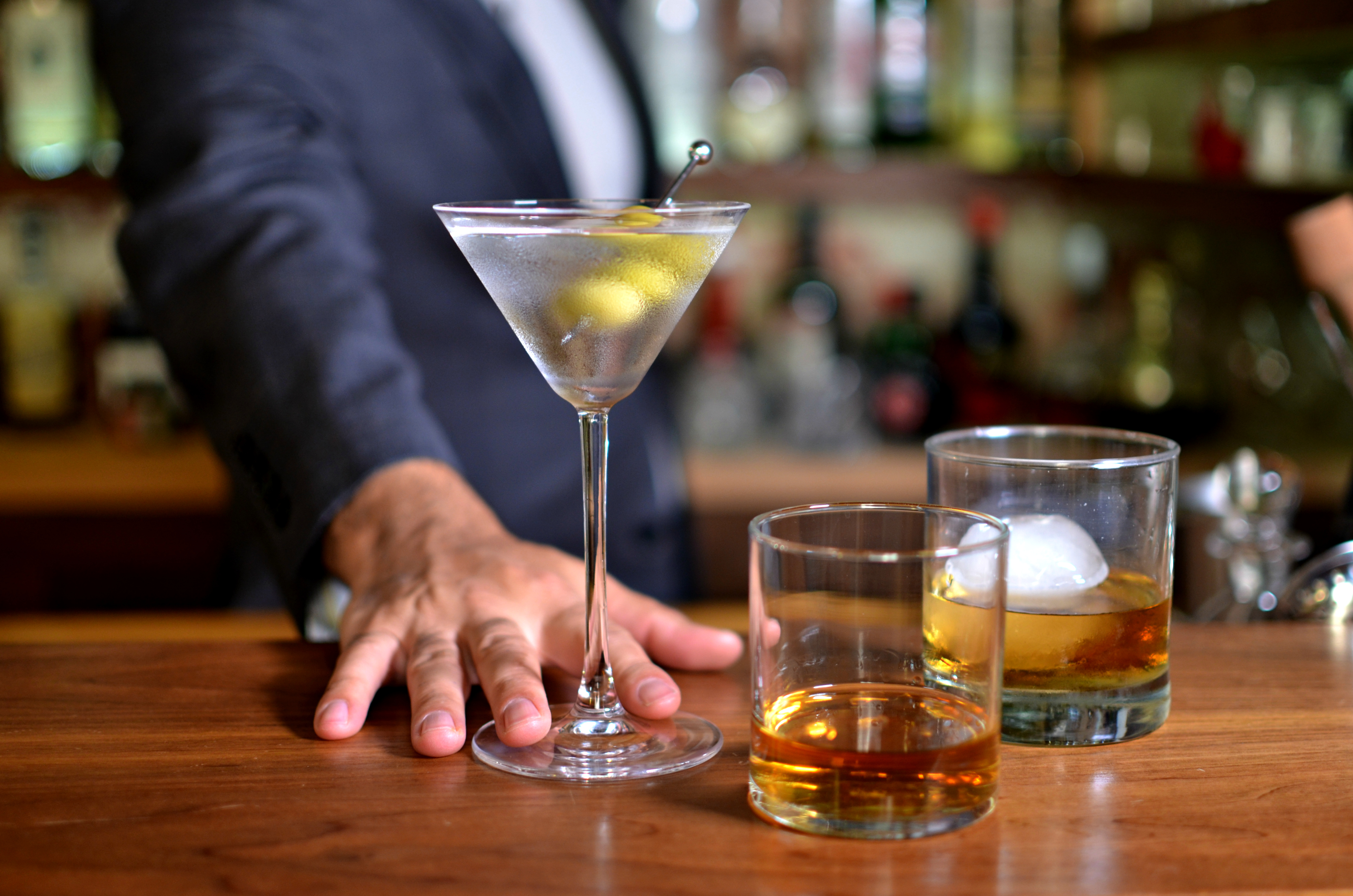Just like any job, hospitality and bartending have their own language. While every bar has terms of their own, these are the ones I’ve found to be fairly common in the industry, and are definitely worth knowing.
The Drink Order
When your customer orders a drink, there are some key terms that help explain exactly what they are looking for. Know these drink order terms before getting behind the stick – it’ll save you time, embarrassment, and incorrect orders.
- “Up” or “Straight up”: To serve a chilled cocktail in a stemmed glass (typically in either a coupe or martini glass), without ice.
- “Neat”: Most common with whiskey and scotch orders, “Neat” is when a spirit is served room temperature in a glass without ice.
- “On the Rocks”: Like “neat”, but with ice.
- “Dry” / “Wet”: Most common in martini orders, a “Dry” martini has less Vermouth and a “Wet” Martini has more.
- “Back”: This is a 2 part drink order and will usually include a neat spirit and an additional beverage to be consumed alongside it. “I’d like a Fernet Branca with a beer back.” Also called a “chaser”.
- “Well” Spirit: This is the most often used and lowest cost brand of each type of spirit offered at a bar. Bottles will be stored in the (aptly named) “well”, (also called “speed rail”). Well spirits are what the bartender will use if a customer doesn’t specify the brand of spirit for their order.
- “Call” Spirits: When a customer does specify the spirit they’d like in their cocktail, it’s a “call”. For example, if the customer says “Grey Goose & Soda”, it’s known as a “call” order.
- “Top Shelf” Spirit: A premium spirit. Customers can order a “Top Shelf Margarita” and the bar will use a premium tequila in the drink. A customer “calling” a premium spirit for their cocktail is also considered “top shelf”.

All About Customer Service
Now that you’ve mastered the drink order, it’s time to deal with the customers. Here are some useful terms for managing customers and their tabs.
- “VIP”: No surprise here – this is a term you might hear from your manager when someone special walks in the door. Time to roll out the red carpet!
- “86”: Used for both customers and items on the menu. 86 means “gone”. For example, when you “86” a customer, it means they are no longer welcome. When the chef tells you “86 the Pot Pie”, it means the kitchen’s out – don’t take any more orders for pot pie.
- “Turn”: The full cycle from a guest’s arrival until their departure. Maximizing turns at your bar is a great strategy for increasing tip income.
- “Comp”: To give a customer something for free – whether it’s removing something from their bill or giving them something extra. Often used to give VIP’s an extra special experience or to apologize for a problem or error.
- “Spill”: When a drink doesn’t get to the guest due to being made incorrectly or actually “spilled”, it’s typically put into the POS as a “spill”.
- “Autograt”: This is for parties large enough that gratuity is automatically added to the bill. Short for “Automatic gratuity” or “big fat tips”.

Doing the Job
Here’s where the real lingo kicks on – when bartenders are talking to other bartenders after a shift, or communicating with one another while trying to keep up with a busy bar.
- “Behind”, “On your left”, or “on your right” What you say when you’re walking behind, to the left, or to the right of another staff member. This warns them not to run into you.
- “Corner”. When you’re turning a blind corner in a restaurant, say “corner” to prevent collisions with unseen staff.
- “In the Weeds”: When the bar is so busy you can’t keep up – or if you’re just understaffed and struggling to keep up with demand.
- “A Double” (Shift): When you’re scheduled to work a day and night shift in the same day.
- “Clopening” (Shift): The only thing worse than a double shift. This is when you’re working the closing shift one day and the opening shift the next morning.
- “Burn”: To throw away. For example, if glass breaks over the ice well, you’re going to have to “burn” the ice well to clean it out.
- “On the Fly”: Kind of like “winging it”. “She wants something sweet and sparkly so I created this cocktail for her on the fly.”
- “Broken” bottle: Yes, it’s what you call a broken bottle. But it’s also what you call a bottle you just “killed” (emptied).
- “Mise en Place”: Pronounced, “meez ehn plahs” (French beret required) translates roughly to “everything in its place”, this phrase is typically used to describe a bartender’s work environment with a particular focus on the garnish tray, cocktail straws and napkins.
Learning the lingo is just one more thing you can do to learn the dance of a smoothly operating bar. Familiarize yourself with the words your coworkers are using and you’ll be up to speed in no time!



Just a small correction/addition: \”on the fly\” is more often used to need \”quickly\” or \”asap\” as in ahead of other order tickets in line. If you forget to ring in an item but realize it too late you would ask the chef to make it \”on the fly\” to avoid waiting for the ticket that would go to the end of the line. Hope this helps!